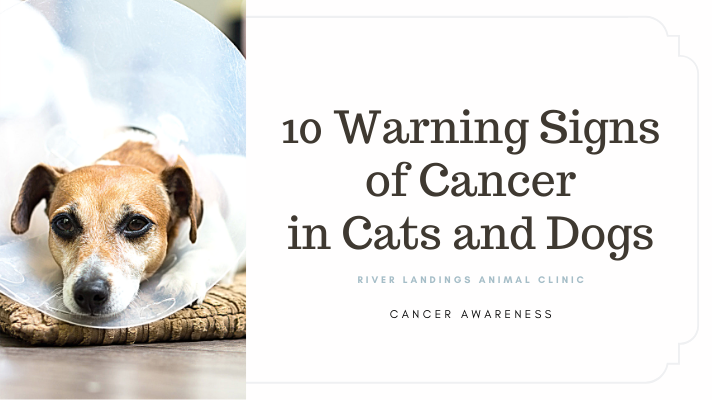Routine lab work is a fundamental part of staging a pet’s cancer. When your veterinarian orders routine tests, they are ensuring that your pet is systemically health and that there are no surprises and any warning signs are flagged in regards to trouble such as organ function or electrolyte status.
However, such tests rarely provide insight into a pet’s cancer status. With a few exceptions (skyrocketing white blood cell count pointing to leukemia, for example) lab work will not accurately inform your veterinarian whether or not your pet has cancer.
A veterinarian may run what are considered “screening tests”. This is when your vet will perform a test in a healthy patient to rule in/out a predisposition to cancer or hidden cancer that has not yet manifested with any clinically notable signs. These tests are designed to quantitate the presence of biomarkers. Biomarkers are measurable indicators of particular biological states or conditions and can be used to detect, screen, diagnose, treat, and monitor disease.
When a veterinarian considers screening tests for cancers, most frequently, assays measure serum levels of thymidine kinase (TK) and c-reactive protein (CRP). The utility of these markers is not well established but emphasis is often placed on their ability to detect what we refer to in the medical profession as minimal residual disease (MRD).
Thymidine Kinase (TK)
TK is a protein involved in DNA synthesis and is expressed in dividing cells. TK levels increase with increased rate of cellular proliferation. TK levels correlate to the proliferative activity of lymphoid cells (and less likely with proliferation of other kinds of tumor cells). Elevated TK levels are also associated with viral infections and inflammatory conditions.
Serum TK levels tend to be higher in dogs with cancer than in healthy dogs. However, there is a large overlap in levels measured from healthy dogs, dogs with cancer, and dogs with other diseases. This means that even dogs previously diagnosed with cancer can have normal serum TK levels.
TK levels are also measured in cats, with an established interval from clinically healthy cats, cats diagnosed with lymphoma, and cats with inflammatory gastrointestinal disease. Cats with lymphoma in these studies had significantly higher serum thymidine kinase activity than healthy cats or cats with inflammatory disease and cat’s with non-hematopoietic neoplasia.
C-Reactive Protein (CRP)
CRP is the major acute phase protein produced in response to inflammation and cytokine release. Serum CRP levels correlate to the duration and severity of inflammatory response. Causes of inflammation are varied, and include infection, autoimmune disease, and cancer. Therefore, CRP is considered a sensitive marker for inflammation, but unfortunately, it is relatively non-specific as to the nature of the inflammation it represents.
Dogs present more elevated CPR in some variants of cancer, and serum levels are generally elevated in dogs with cancer than those that are clinically healthy. Dogs with lymphoma who are in remission (with microscopically detectable cancer cells in their bodies) generally have lower CRP than dogs with measurable lymphoma. This places potential value on serum CRP levels as a marker for cancer remission status and relapse of disease.
Additional research is necessary to determine the value of measuring parameters such as CRP or TK before veterinarians can routinely recommend these screening tests for every patient.
It is advisable by veterinarians that owners should begin testing their pets at the earliest possible age and test consistently throughout their pet’s lives, in order to establish the most adequate control values with which to compare to as the pet ages.
It is understandable for pet owners to wish this process would be simplified by a single lab test to assure their pets were healthy. However, it is important that diseases such as cancer is detected as early as possible.
Hear From Us Again
Don't forget to subscribe to our email newsletter for more recipes, articles, and clinic updates delivered to your inbox (here). Or, you can keep up to date by liking and following our Facebook page (here).
Related: We have more information under our cat health + dog health categories.









